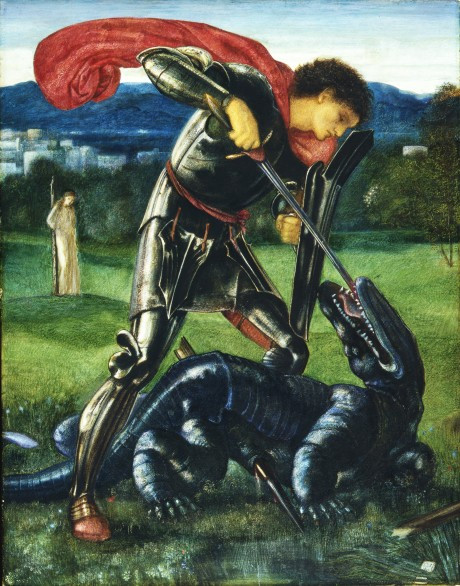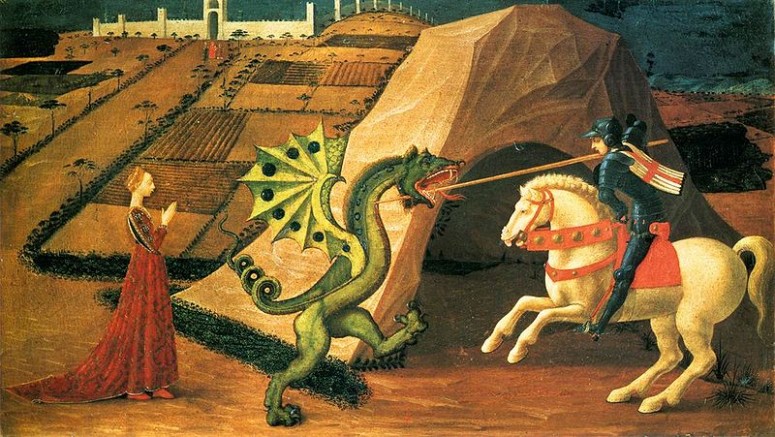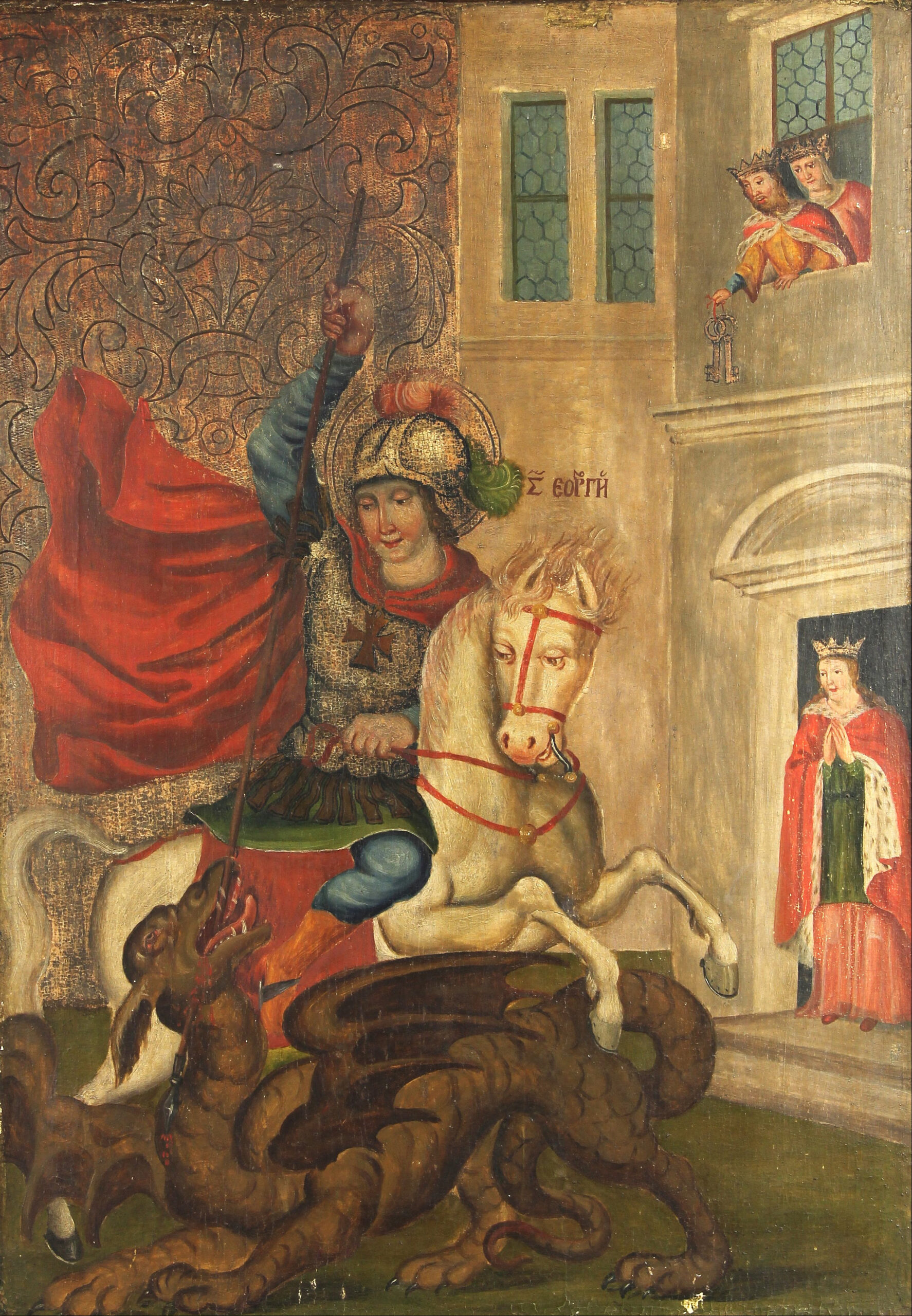So it’s St. George’s Day 2015, and we all know the tale of the knight in shining armour slaying the dragon to rescue the damsel. Dragons and the Medieval Era are like bread and butter, but of course they aren’t real! That led me to further investigation; what is the historic significance of dragons in Medieval Britain? They appear as mythological beings as far back as ancient Greek civilization, with mixed symbolic meaning, but by the Plantagenet times (what is generally considered to be the Medieval era), dragons started to symbolize the Devil in Christianity. The religious significance of the St. George and the Dragon tale derives from the Crusades and is possibly a metaphor for the conquest of Christianity over what they saw as ‘evil’; the Seljuq Turks’ occupation of Jerusalem and the Holy Land. The tale along with dragon imagery became highly popular towards the late Medieval Era in the 1400s, and can be seen in contemporary artwork.The tale reached as far as Mediterranean Europe seen in the works of renaissance artists.
Fewer works featuring the dragon exist prior to the European renaissance revival in arts, although there are depictions dating as far back as the 10th/11th Century in a church in Cappodocia (now part of Turkey) hence its roots abroad in the Crusades. It is quite strange to picture the origins of the tale coming from somewhere very different to the rolling English countryside yet being so integral to it. The dragon appeared in text around this time, yet George was mentioned as early as the 7th Century as a mere soldier, implying it was probably a story that evolved over time, and the dragon immortalized the peak of the exaggeration of the popular story.
Looking at artwork from the Middle Ages, it is evident dragons haven’t always been four legged scaly winged beasts. They often appear to not have their front pair of legs, and are more similar to serpents – some don’t even have wings! It derives from the Greek term ‘drakon’ meaning “serpent of huge size, water-snake”. This suggests historically dragons have always been viewed as mythical snakes rather than four-legged beasts, but variations differ. One thing that seems consistent in most artworks of St. George and the Dragon is that it is green rather than red; unusual considering something bad is usually thought of as being red – an association that may have developed since the medieval times. Perhaps the green colour comes from the colour of the wilderness – a place feared in the Middle Ages considering it was home to wolves and wild boar in areas which are now barely residence to a wood pigeon. Imagery of red dragons in more recent artworks possibly come from Welsh influence in which a red dragon is seen on their flag and is part of their folklore. Dragons in the Middle Ages existed as little more than a Christian symbol, but they have existed around the world with many other meanings for many previous centuries.
Please note the information above is given from personal judgement of contemporary artworks and re-iteration of other secondary sources. It may not be factually correct although it is often a reasonable judgement.








